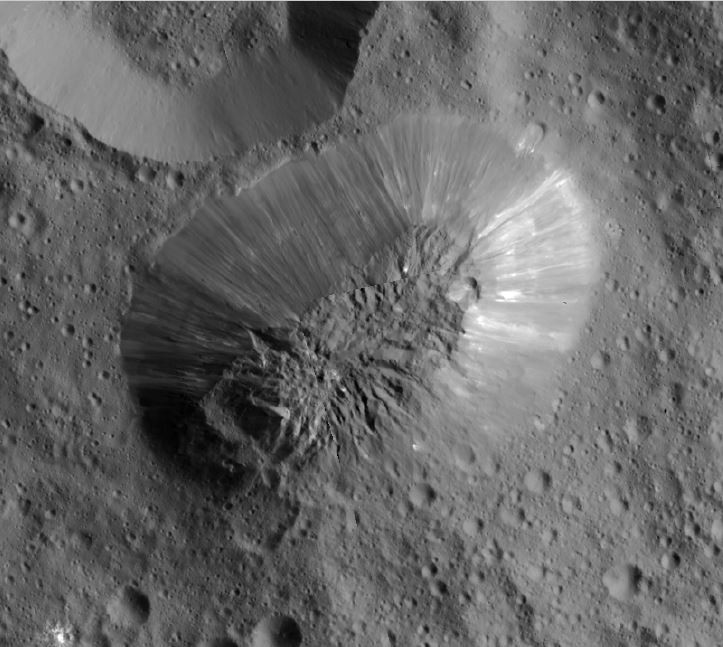Massive ice volcano discovered on dwarf planet Ceres
The 4km high cryovolcano was identified using images from Dawn spacecraft.
A huge ice volcano has been discovered on Ceres, the dwarf planet that sits between Mars and Jupiter. Using imaging data from Nasa's Dawn spacecraft, a team of scientists say they have found a 4km high cryovolcano formation, which has been dubbed Ahuna Mons.
The potential for cryovolcanoes on Ceres – a rocky and icy world measuring 945km in diameter – had previously been propounded. However, evidence for them had been lacking.

Cryovolcanoes are volcanoes that spout volatile materials like water or methane instead of molten rock. These features have been found on Saturn's moon Enceladus and have been believed to be present on a number of other moons in the Solar System, including Europa, Titan, and Ganymede.
In a study published in Science, researchers have now found evidence of a cryovolcano on Ceres. Images from Dawn showed a dome-shaped mountain with an elliptical base and a concave top.

Ottaviano Ruesch, from Nasa's Goddard Space Flight Centre, and colleagues used Dawn Framing Camera Images to identify Ahuna Mons. They say the cryomagma includes salts and water ice.
Explaining why they believe this mountain to be a cryovolcano rather than another geological feature, they argue its age – around 200 million years – means it formed relatively recently. Compared with other craters surrounding it, it is far younger.
Furthermore, they believe there is no evidence of erosional features or compressional tectonism, so they think the dome of Ahuna Mons "formed mostly through extrusion" – extrusion is a phenomenon where the eruption of material makes a volcano grow on the outside.

"For the formation of Ahuna Mons, we thus propose a volcanic process involving ascent of cryomagma and extrusion onto the surface followed by dome development and spreading," the team wrote. They said a long-term heat source in Ceres' interior, coupled with suitable materials led to the production of cryomagma, but add measurements of minerals and gravity will be needed to better understand the composition of the mountain.
© Copyright IBTimes 2025. All rights reserved.






















